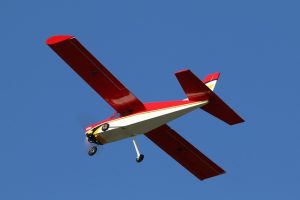
When researching aviation concepts, you may come across glide aviation. All fixed-wing aircraft are capable of gliding. It’s the result of their aerodynamic shape, which is largely attributed to their wings. Glide ratio represents how well an airplane can glide. For a better understanding of glide ratio and why it’s important, keep reading.
Overview of Glide Ratio
Glide ratio is a measure of how far an unpowered airplane or aircraft can travel by gliding. It’s expressed as a ratio of forward units to descent units. An airplane with a glide ratio of 15:1, for instance, can travel 15 forward units for every 1 unit that it descends. If it travels forward 100 feet, it will descend by 1 foot.
An airplane with a lower glide ratio of 8:1, on the other hand, can only travel 9 forward units for every 1 unit that it descends. It it travels forward 90 feet, it will descend by 1 foot.
What Affects Glide Ratio?
Several factors can affect an airplane’s glide ratio, one of which is the wing design. Airplanes with long and narrow wings typically have a higher glide ratio than their counterparts with short and wide wings.
The deployment of wing flaps or landing gear can affect an airplane’s glide ratio. When deployed, these components create drag. Both wing flaps and landing gear increase the amount of drag to which an airplane is exposed, which in turn lowers the airplane’s glide ratio.
Wind conditions can affect an airplane’s glide ratio. In tailwinds, airplanes can typically glide longer distances without power because they are going in the same direction as the wind. In headwinds, conversely, airplanes glide shorter distances, resulting in a lower glide ratio.
Why Glide Ratio Matters
Pilots consider glide ratio because it allows them to calculate the distance the airplane can travel in the event of engine failure. Most modern commercial airliners are equipped with multiple engines, so it’s unlikely that all engines will fail during a given flight.
Smaller privately owned airplanes, however, may have a single engine. If the engine fails, pilots may have to glide to a safe landing site. By knowing the airplane’s glide ratio, pilots can determine how far the airplane can fly without engine power.
In Conclusion
Glide ratio isn’t a meaningless metric in aviation. By understanding how far an aircraft can travel without power, pilots gain valuable insight for making quick, informed decisions during emergencies. Whether flying a single-engine plane over rural terrain or a commercial jet at cruising altitude, knowing the glide ratio can help chart a safe course to a suitable landing site.



